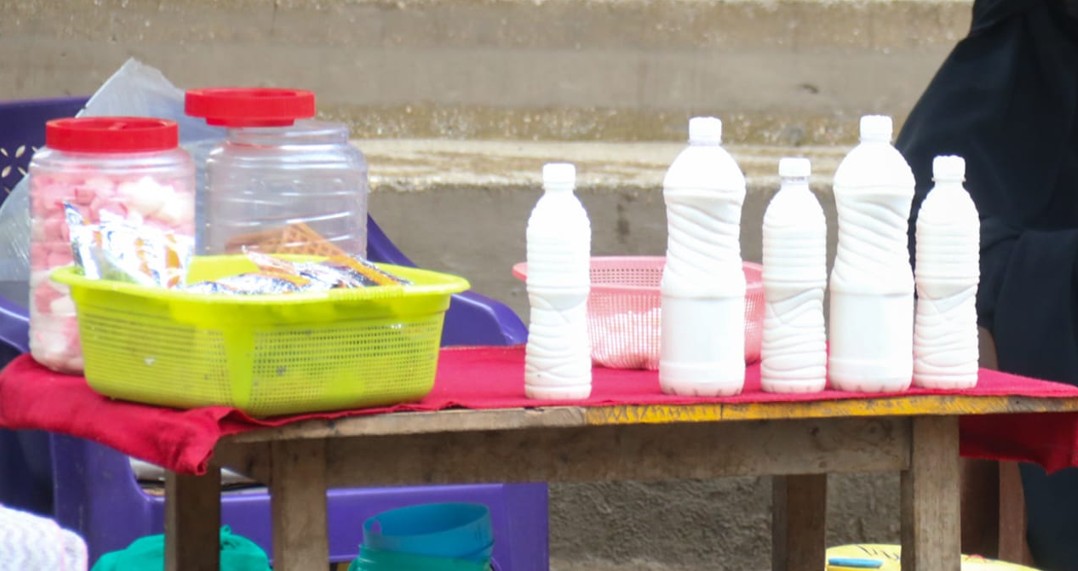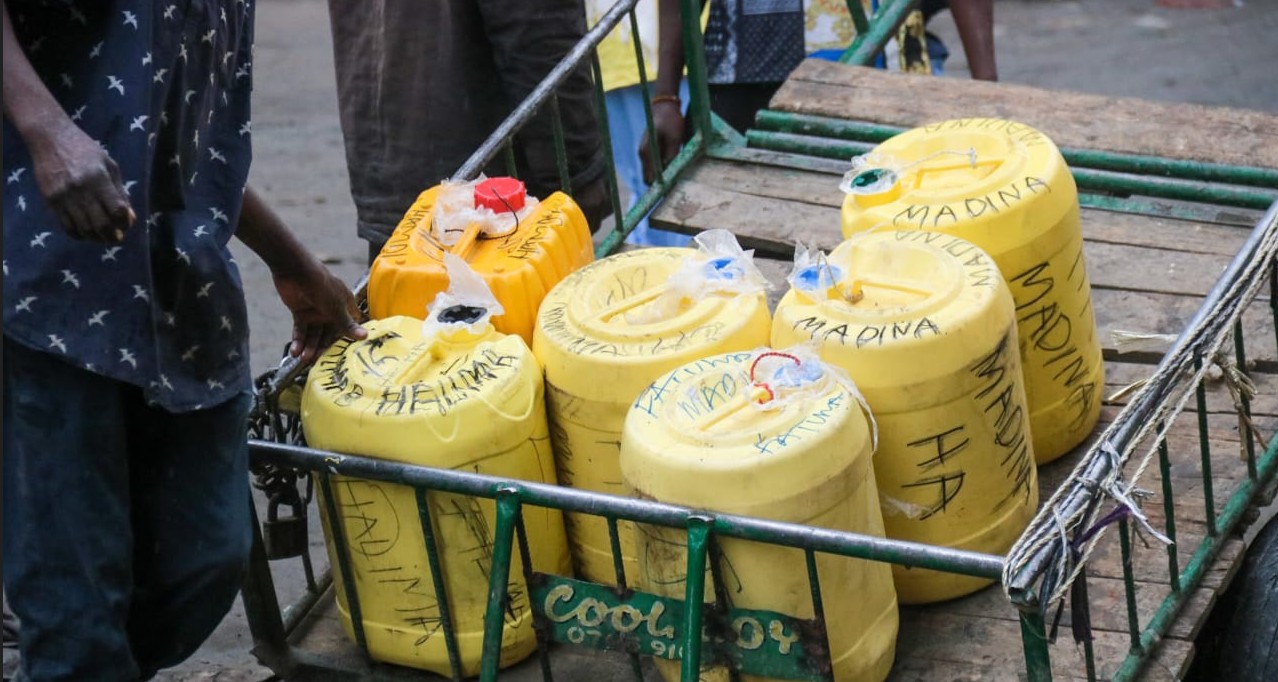Why camel milk is gaining ground and why experts urge safer consumption

When properly refrigerated, pasteurised milk remained safe for consumption for several weeks, highlighting the importance of pasteurisation and cold storage in reducing health risks.
Grace’s* first encounter with raw camel milk wasn’t driven by curiosity, but by desperation. Battling low immunity and persistent digestive problems, she was in search of a natural remedy. So when she heard about the milk’s supposed healing powers, she felt compelled to try it.
“I had heard it could help with immunity and can treat HIV. At first, my body didn’t respond well. I had diarrhoea all the time. But I kept going. After a while, I adjusted, and now I feel better, stronger.”
More To Read
- New study links smartphone use on the toilet to rising haemorrhoid cases
- How to make flavoured camel milk yoghurt at home
- Clean hands, safe bites: Why everyday food habits matter more than you think
- Cost of neglect: How poor sanitation is fueling cholera risk in informal settlements
- South Sudan launches lifesaving vaccines to fight pneumonia, diarrhoea in children
- Rotavirus: The silent danger threatening toddlers and why early vaccination is key
Now working as a shop attendant in a small camel milk shop, Grace not only consumes the milk daily but also advocates for its benefits.
“When you come here, you’ll find people lining up—some come early in the afternoon, others in the evening. Many drink up to a litre in one sitting, especially older people. They say it helps with diabetes, obesity, and digestion. And they keep coming back.”
They sell camel milk at Sh250 per litre—a price that reflects its rarity and high quality. While some vendors in other parts of Eastleigh offer it for as little as Sh100, their milk’s purity and freshness, sourced directly from pastoral communities in Namanga, justifies the premium.
“Even if I don’t know all the science behind it,” Grace admits, “I believe in it. It gives me strength.”
Dietary staple
Camel milk has been a dietary staple for nomadic communities in northern Kenya—especially among the Somali, Borana, and Rendille—for generations. Traditionally prized for its ability to sustain life in harsh, arid climates, it is now gaining traction in urban areas for its perceived medicinal benefits.
Kamilah Said, a longtime camel milk vendor in Eastleigh, Nairobi, has been in the trade for years. For her, it’s not just a livelihood—it’s a deeply rooted part of her identity.
“I’ve been drinking camel milk since I was a child,” she says with pride. “It’s good for the body. We don’t boil it, just warm it slightly if we must. Most of our customers, even children, drink it raw.”
 Camel milk being transported by cart in Eastleigh, Nairobi, after arriving from upcountry. (Photo: Justine Ondieki)
Camel milk being transported by cart in Eastleigh, Nairobi, after arriving from upcountry. (Photo: Justine Ondieki)
Freshness crucial
Kamilah sells her camel milk for Sh100 per litre, with fresh deliveries arriving daily from camel-rearing regions like Isiolo, Garissa, Wajir, and Mandera. She emphasises that freshness is crucial—any unsold milk is refrigerated, though it rarely lasts long on the shelf.
“Our customers know what they want. They come from all backgrounds—young, old, sick, and healthy. Many say it helps with blood sugar, ulcers, and even fatigue.”
Bilal Ahmed is a regular camel milk drinker, enjoying it both raw and in his tea. For him, it's not a passing trend but a tradition deeply woven into his upbringing.
“This is part of the culture I was born into,” he says. “I’ve always known that camel milk strengthens the bones, and that’s one of the main reasons I enjoy it.”
Bilal believes camel milk offers several health benefits, citing its high calcium content and its ability to keep the skin glowing. However, he remains cautious about exaggerated claims, particularly those that suggest it can cure serious illnesses like HIV.
Medicinal value
“I believe it has medicinal value, yes—but for major illnesses, I always make sure to seek proper medical treatment,” he explains. “Camel milk can support your health, but it’s not a replacement for medicine.”
He adds that for those new to camel milk, it can initially cause some digestive discomfort.
“If you’re not used to it, it might cause a bit of diarrhoea at first. But over time, your stomach gets used to it,” he says.
Scientific research on camel milk is still evolving, but early studies suggest it may have some promising properties.
Camel milk contains less fat and cholesterol than regular milk and is rich in vitamins, iron, and insulin-like proteins that may benefit individuals with diabetes. It’s also thought to possess antimicrobial and anti-inflammatory properties, making it appealing to those with weakened immune systems.
Raw milk risks
Raw consumption, which is widely preferred among users, also comes with risks—particularly exposure to pathogens if the milk is not handled hygienically.
Dr Esher Mwaura advises caution when it comes to consuming raw camel milk, particularly for children and people with weakened immune systems.
While she recognises its nutritional value—especially as a rich source of calcium—she warns that drinking it raw can pose significant health risks, especially for young children who are more susceptible to infections and dehydration.
She explains that some parents mistakenly believe raw camel milk can help treat diarrhoea in young children.
In several cases she has seen, mothers gave the milk to children under five during diarrhoeal episodes, hoping it would flush out the illness.
Instead, the symptoms worsened—diarrhoea became more severe, leading to dangerous levels of dehydration. Many of these children were only brought to the hospital after more than two days of deteriorating health, by which time their condition had become critical.
Misguided
Mwaura stresses that this approach is misguided and dangerous.
“There’s a misconception that drinking more milk during diarrhoea helps to cleanse the body. But what it actually does is increase fluid loss, causing further weakness and dehydration,” she explains.
“After more than one episode of diarrhoea, especially in children, medical attention should be sought immediately. You should not try to manage it by encouraging more diarrhoea.”
She warns against unproven claims that camel milk can treat serious diseases like diabetes or HIV.
No scientific evidence
While camel milk has gained popularity for its potential health benefits, she points out that there is currently no scientific evidence to support its use as a treatment for such conditions.
“Some people are tempted to replace prescribed medication, particularly antiretroviral therapy for HIV, with camel milk. This is not only unsupported by research but also extremely dangerous”.
Until further scientific studies are conducted, Mwaura advises people to continue with their prescribed treatments and view camel milk as a supplementary food, never a substitute for proper medical care.
She recommends gently boiling camel milk before consumption to help eliminate harmful bacteria that may be present.
She explains that this simple step can significantly reduce the risk of infections caused by bacteria introduced during milking, handling, or transportation, making the milk safer to drink—especially for vulnerable groups like children and those with weakened immune systems.
A study by researchers at the University of Nairobi, titled "Microbiological Quality of Camel Milk Along the Market Chain and Its Correlation with Foodborne Illness Among Children and Young Adults in Isiolo, Kenya," investigated the microbial contamination of camel milk from the point of milking to its sale in urban markets.
Handling and transportation
The research aimed to evaluate how handling and transportation practices affect the safety of camel milk and its implications for public health, particularly among vulnerable groups such as children and young adults.
The study found that camel milk collected directly from the udder under sterile conditions generally met safety standards, showing low levels of bacterial contamination.
However, as the milk made its way through collection centres and onto urban markets in Nairobi, bacterial counts increased significantly. By the time it reached consumers, around 75 per cent of the samples had exceeded safe microbiological limits, with high levels of harmful bacteria such as Enterobacteriaceae.
This contamination was largely attributed to poor hygiene during milking, long-distance transport without refrigeration, and unregulated vending conditions.
The study also linked raw camel milk consumption to a notably higher risk of gastrointestinal illnesses, including diarrhoea and vomiting. People who consumed the milk raw were found to be more than twice as likely to suffer from such conditions compared to those who did not.
Researchers demonstrated that pasteurising camel milk at 65°C for 30 minutes effectively eliminated harmful bacteria.
When properly refrigerated, pasteurised milk remained safe for consumption for several weeks, highlighting the importance of pasteurisation and cold storage in reducing health risks.
The findings underscore the urgent need for improved hygiene standards, better infrastructure, and public education to ensure the safe consumption of camel milk, particularly for young children, who are most at risk from foodborne diseases.
Top Stories Today











































